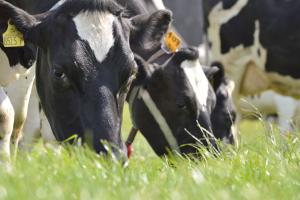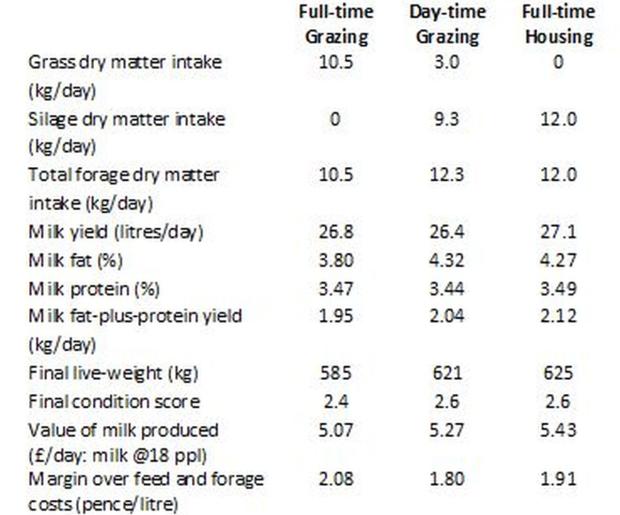AFBI research highlights value of grazed grass
Date published:
In recent years there has been an increasing trend towards less reliance on grazing in dairy systems, with many herds now adopting part or full time housing of cows during the summer period.

One reason normally given for the move away from full-time grazing is ‘’difficulties in meeting the nutrient requirements of high-yielding cows within grazing systems’’. Increasing herd size has also contributed to the increased adoption of ‘summer housing’, as in some cases there is insufficient grazing area readily accessible from the milking parlour. This can be a particular issue on farms with fragmented land blocks, where walking cows to and from grazing areas has become increasingly difficult due to increasing traffic on many rural roads.
One of the key factors that needs to be considered in adopting a system with increased reliance on housing during the grazing period is the very significant increase in costs, and whether this can be justified in terms of improved cow performance. A recent study at AFBI Hillsborough examined cow performance with housed and grazing cows offered the same amount of concentrates.
Details of study
Sixty-six mid lactation Holstein-Friesian cows, 22 in first lactation, were managed on one of three systems from early May to late September:
- Full-time grazing: Cows grazing both ‘day’ and ‘night’.
- Day-time grazing: Cows grazing by ‘day’ (between morning and afternoon milking) and housed at ‘night’ and offered grass silage.
- Full-time housing: Cows housed both ‘day’ and ‘night’ and offered grass silage.
The silage offered was good quality, and had a dry matter of 33%, a crude protein content of 14.3% DM and a D value of 720 g per kg. All cows were offered 8.0 kg of concentrate per day in-parlour (4 kg at each milking), with the concentrates offered with each system designed to supplement the forage offered.
Results
The performance of cows on the three treatments are summarised in Table 1. Cows on the full-time grazing treatment had a much higher grass intake (10.5 kg DM/day) than those on the day-time grazing treatment (3.0 kg DM/day). This was despite the fact that the cows grazing by day only had a higher post-grazing sward height (6.0 cm) compared to those grazing full-time (5.2 cm). The low grass intake of the day-time grazing cows was reflected in their high silage intakes (9.3 kg DM/day), which was only 2.7 kg DM/day lower than for cows housed full-time.

An economic analysis was undertaken based on a milk price of 18 pence per litre, a concentrate cost of £230/t, and with grazed grass and grass silage costed at £110 and £140/t DM, respectively (Full economic costs, CAFRE forage costs). The value of milk produced was 36p per day lower with full-time grazing compared to full-time housing, largely due to the lower fat content of the milk produced. However, the margin over feed costs was 17 pence/cow/day lower with the full-time housing treatment, compared to the full-time grazing treatment and 28 pence/cow/day lower with the daytime grazing treatment. Whilst labour and machinery costs associated with the different systems will vary greatly from farm to farm, depending on facilities and equipment available, the day-time grazing system will have the highest costs as it incorporates all aspects of both the full-time grazing and housing systems. In addition, previous research has also shown that housed cows are likely to have more health problems than grazing cows.
Conclusions
The performance of cows on each of these different management systems will vary between individual farms depending on the silage quality available, grassland management practices and weather conditions during the grazing period. However, the results of this study demonstrate that the difference in performance between well managed grazing systems and those involving part or full-time housing over the summer are very small and did not compensate for the significant increases in feed, labour and machinery costs associated with housing. With current low milk prices, getting more grazed grass into the diets of dairy cows and minimising costs of production makes economic sense and so remains the most cost efficient option.
Notes to editors:
AFBI's Vision is “Scientific excellence in Northern Ireland … serving the world”.AFBI carries out high quality technology research and development, statutory, analytical, and diagnostic testing functions for DARD and other Government departments, public bodies and commercial companies.All media enquiries to AFBI Press Office